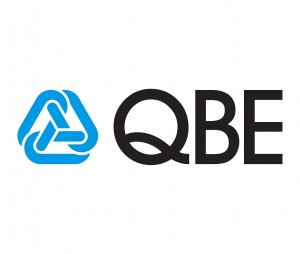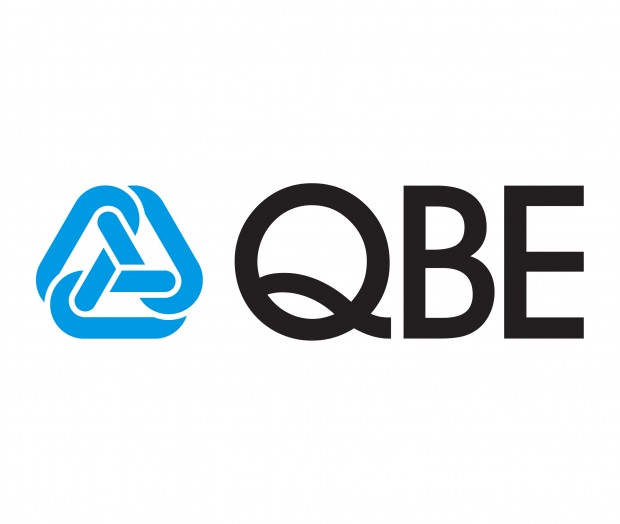 QBE reported a healthy profit hike during the first half of 2017, despite heightened claims activity in its Emerging Markets’ division, which reported a combined ratio of 110.8 percent. This poor performance has led to the creation of two separate divisions for Asia Pacific and Latin America, which will replace the Emerging Markets’ division.
QBE reported a healthy profit hike during the first half of 2017, despite heightened claims activity in its Emerging Markets’ division, which reported a combined ratio of 110.8 percent. This poor performance has led to the creation of two separate divisions for Asia Pacific and Latin America, which will replace the Emerging Markets’ division.
Group CEO John Neal attributed QBE’s overall strong H1 performance to healthy rate increases in its home markets in Australia and New Zealand, coupled with strong levels of business retention in that region, as well as a return to top line growth in North America — and, of course, the company’s ongoing program to cut administration expenses.
QBE’s H1 profit rose 73 percent to A$562 million (US$445.5 million), compared with A$324 million (US$256.8 million) reported for the same period last year. During the same period, QBE reported a combined operating ratio of 94.9 percent, compared with 99.1 percent during H1 2016. During H1 2017, the company’s expense ratio improved to 15.2 percent, down from 16.1 percent last year.
On a constant currency basis, QBE’s gross written premium rose 3 percent in H1 to A$8 billion ($6.3 billion), compared with $7.9 billion ($6.3 billion) reported during the first half in 2016. The company’s net earned premium was up 6 percent to A$6.1 billion ($4.8 billion), compared with A$5.8 billion ($4.6 billion) in H1 2016.
“Net earned premium is up slightly more at 6 percent due to a combination of premium earnings and the savings achieved in our reinsurance spend for the 2017 year,” Neal said during a teleconference to discuss the results with financial analysts.
The company has recorded six consecutive halves of prior year claims reserve improvement, which benefits the claims ratio in H1 2017 by 1.8 percent, compared with 3.4 percent 12 months ago, added Neal.
Return on equity was 8.8 percent during H1 2017, compared with 5.1 percent in H1 2016.
Neal then discussed the financial performance of QBE’s divisions.
North America
The North America division continued to show improvement, recording a 98.2 percent combined operating ratio for the half, which is a 2.3 percent improvement on this time last year when the division’s combined ratio was 100.5 percent.
Neal noted that hard work has been done to reduce administration expenses, which is now beginning to show in the division’s expense ratio.
“Underwriting conditions in the Northern Hemisphere remain challenging,” he said, noting that rates have risen “marginally and by 1 percent” in North America during the half.
As evidence of the division’s return to top line growth, Pat Regan, chief financial officer, said premiums in North America grew by 4 percent, which included specialty lines and crop insurance.
Neal said the division’s current “accident year underwriting is solid,” with an improved combined operating ratio of 98.2 percent, which includes a small, prior year release, largely originating from QBE’s crop business.
“There is much more work to do in the second half to further improve the quality of our property and casualty business and reduce our expense ratio, but we are encouraged by the start made for 2017,” Neal continued.
Australia/New Zealand
Neal said the “pace and manner of improvement in our [Australia/New Zealand] division is encouraging, underpinned by healthy rate increases of a little over 5 percent through the first half,” he said, noting that the division maintained renewal retention at or around 83 percent.
Europe
“We flagged as we came into 2017 just how challenging the market conditions are for our European business,” Neal said. “Our average premium rates are off by 1 percent, albeit we are seeing modest growth on a constant currency basis, largely originating from our Continental European businesses and from our reinsurance arm.”
“Europe continues to translate a sensibly cautious current accident year loss pick into prior year improvement and we are reporting $131 million of prior year reserve releases for the half.”
“We are encouraged by the progress we’re making as evidenced by a strong combined operating ratio of 92.2 percent,” Neal continued.
Emerging Markets
Neal then discussed the reasons the company’s emerging markets division deteriorated so significantly, reporting during the first half a combined operating ratio of 110.8 percent. This represents “a significant risk to plan and an underwriting loss of approximately A$70 million [US$55.5 million],” he said.
“The result in our Emerging Markets’ division is extremely disappointing,” said Neal, who went on to discuss the primary reasons for its performance, which together add slightly more than 10 percent to the claims ratio.
He listed the primary reasons for the division’s performance as:
- Delayed sale of Chile operations. “We had agreed in principal to sell our business in Chile at the end of last year but regulatory approvals saw us retain this business for the majority of the first half,” he said, explaining that this has left the company with adverse performance to plan, equivalent to 1.2 percent.
- Catastrophe claims and medium-to-large risk losses. Neal explained that a combination of attritional catastrophe claims and medium-to-large risk losses added 5 percent to the plan. He cited higher catastrophe claims activity in Latin America through the first half and specifically from crop losses in Ecuador – catastrophe claims that cost in aggregate around $20 million. Further, an increased frequency of medium to large risk losses in Asia cost some $30 million with 70 percent arising from the property portfolio and 30 percent in marine lines. “In part, our decision to underwrite some higher hazard classes for property has counted against us,” he continued.
- Hong Kong workers comp, Colombian personal accident. “In Hong Kong we have needed to review the premium bookings and reserving methodology for some of our long term workers compensation contracts and this has resulted in a reserving charge for the half year compared to actually a reserve release 12 months ago.” In addition, he said, the company’s motor personal accident business in Columbia “has continued to trouble us and produce some prior year deficiency.”
Neal emphasized that these frustrating loss trends have been exacerbated by the “absence of rate increases in the region.”
Asia Pacific & Latin America Reorganized
“We have elected to reconstitute Asia Pacific and Latin America as two operating divisions reflecting the respective geographic footprints of each division,” Neal said. (The APAC and Latin America divisions are replacing the previous Emerging Markets division.)
He noted that the company has worked hard “to create the appropriate level of board and underwriting governance in the emerging markets’ regions” and these will be “maintained and strengthened through this reorganization.”
Jason Brown, the current group chief risk operating officer, has been named CEO of Asia Pacific, while Carola Fratini, the current CEO for Argentina, has been appointed CEO, Latin America.
In addition, dedicated chief underwriting officers and chief risk officers are being appointed for the two new divisions.
*This story appeared previously in our sister publication Insurance Journal.





















 Acrisure to Buy MGA Vave From Canopius
Acrisure to Buy MGA Vave From Canopius  What to Expect in 2026: U.S. P/C Results More Like 2024
What to Expect in 2026: U.S. P/C Results More Like 2024  Examining 5 Key Factors Fueling MGA Growth—and Emerging Challenges Ahead
Examining 5 Key Factors Fueling MGA Growth—and Emerging Challenges Ahead  The Hardest Part of Innovation in Insurance Isn’t Technology; It’s Culture
The Hardest Part of Innovation in Insurance Isn’t Technology; It’s Culture 






